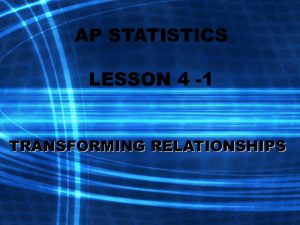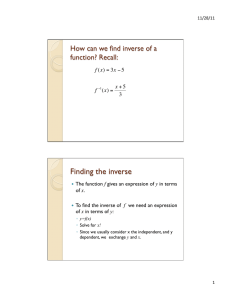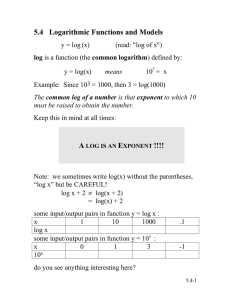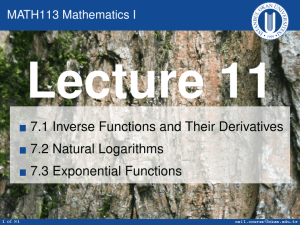LESSON SIX: Logarithms There are also INVERSE FUNCTIONS (or relations).
advertisement
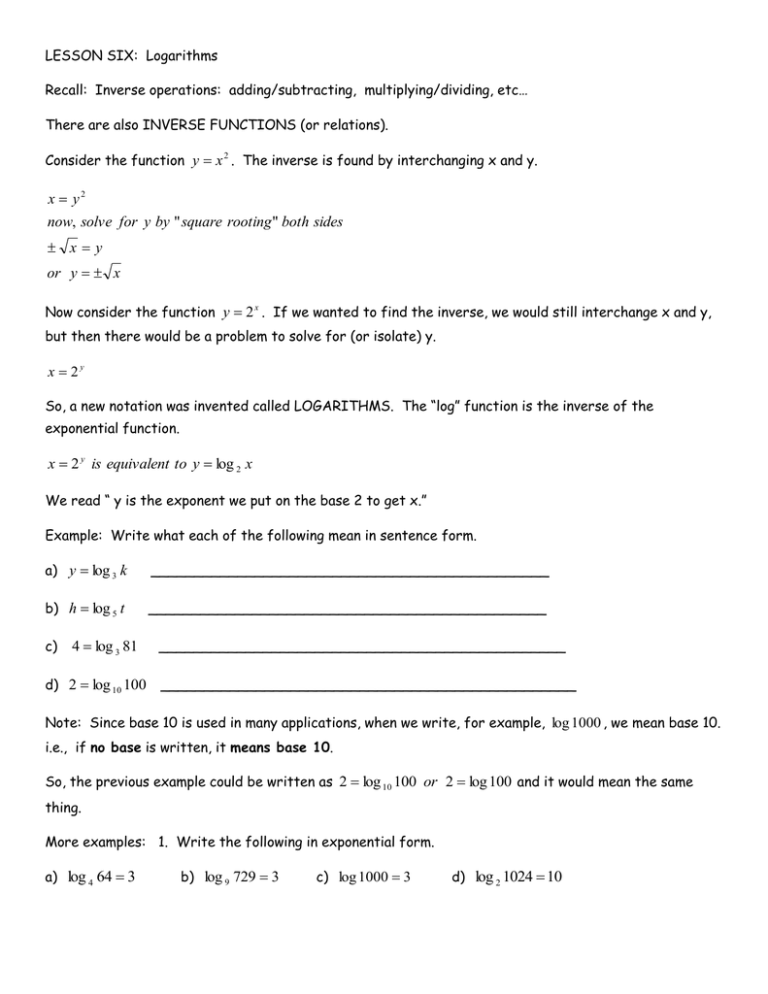
LESSON SIX: Logarithms Recall: Inverse operations: adding/subtracting, multiplying/dividing, etc… There are also INVERSE FUNCTIONS (or relations). Consider the function y x 2 . The inverse is found by interchanging x and y. x y2 now, solve for y by " square rooting " both sides xy or y x Now consider the function y 2 x . If we wanted to find the inverse, we would still interchange x and y, but then there would be a problem to solve for (or isolate) y. x 2y So, a new notation was invented called LOGARITHMS. The “log” function is the inverse of the exponential function. x 2 y is equivalent to y log 2 x We read “ y is the exponent we put on the base 2 to get x.” Example: Write what each of the following mean in sentence form. a) y log 3 k ______________________________________________ b) h log 5 t ______________________________________________ c) 4 log 3 81 d) 2 log 10 100 _______________________________________________ ________________________________________________ Note: Since base 10 is used in many applications, when we write, for example, log 1000 , we mean base 10. i.e., if no base is written, it means base 10. So, the previous example could be written as 2 log 10 100 or 2 log 100 and it would mean the same thing. More examples: 1. Write the following in exponential form. a) log 4 64 3 b) log 9 729 3 c) log 1000 3 d) log 2 1024 10 2. Write the following in logarithmic form. a) 35 243 b) 6 4 1296 c) 5 3 125 d) 10 4 10,000 Note: Your calculator can only evaluate logarithms with base 10 or base e (don’t worry about base e for now.) All other logarithms will have to be evaluated without the aid of a calculator. Hw: Handout “P.227” #1-5 Graph y log 2 x on the grid below by reflecting y 2 x in the line y=x. (Pick a few ordered pairs and interchange the x- and y- values. When you are done, show me and I will give you a mark for it.)

